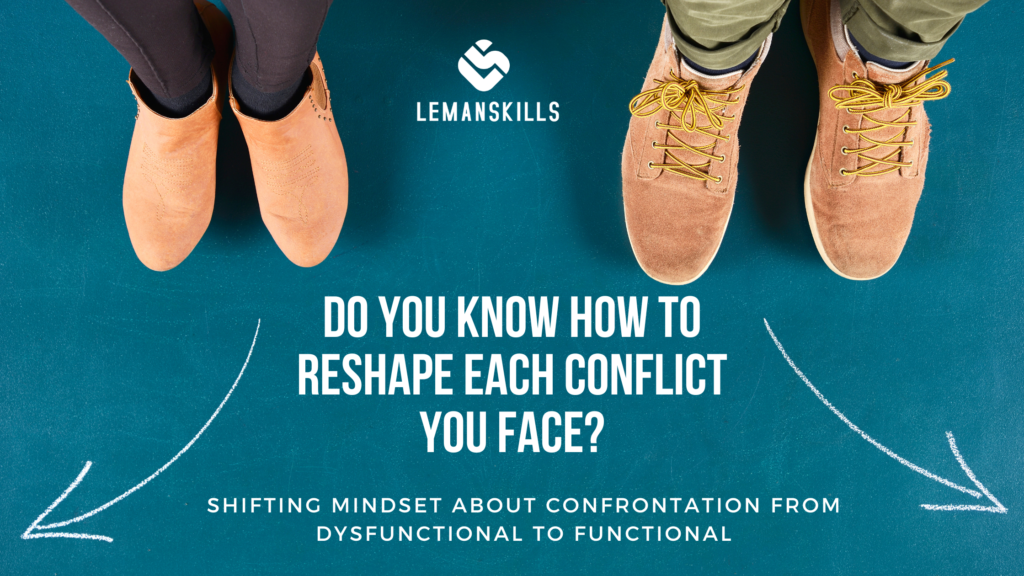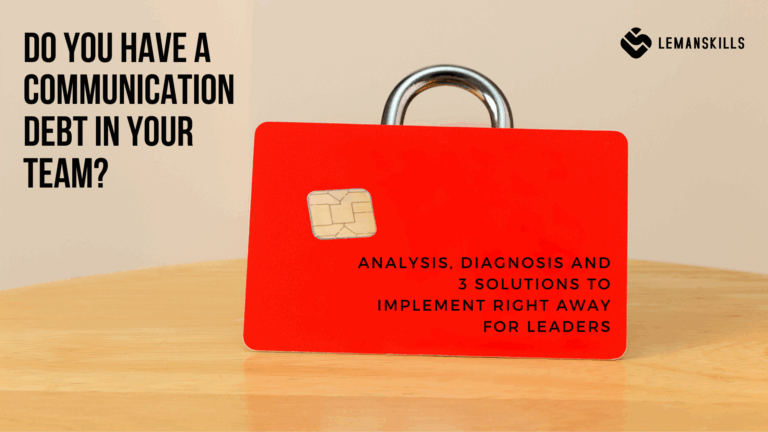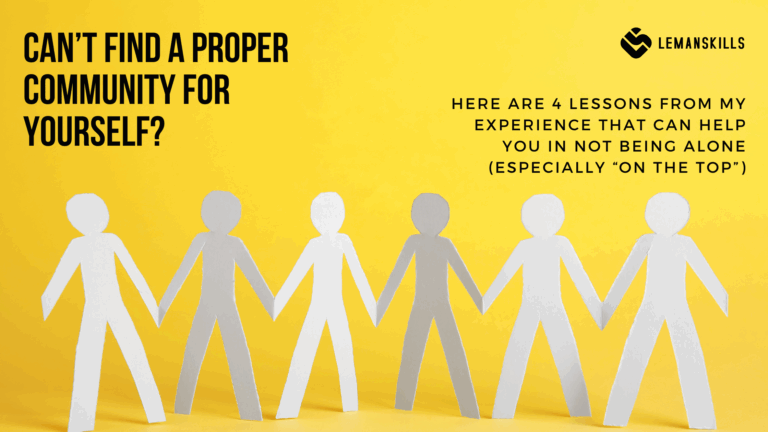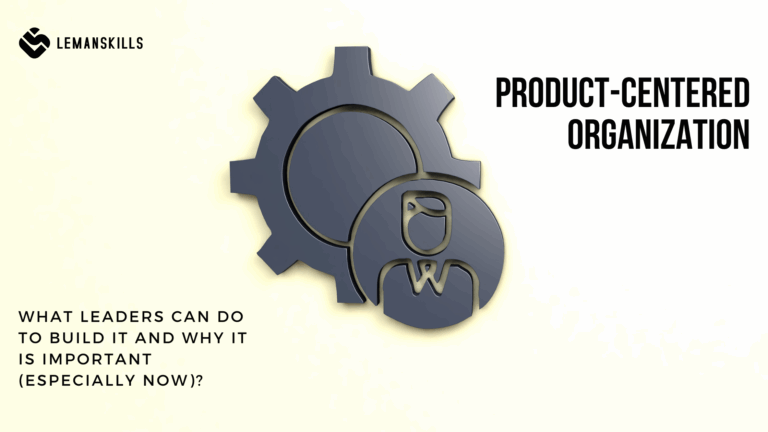When we hear “conflict”, we think “trouble”. When we hear “conflict”, we think “dysfunctional team”, where communication doesn’t work, and people have personal issues. Or when we hear “conflict”, we think that leader doesn’t know how to lead his/her team successfully.
Is that really true? Why are we so scared of a conflict? What is the worst thing that can happen when there is a conflict in the team? What kind of experiences we have with the conflict that make us think and behave in a certain way when one appears?
Why do we avoid conflict?
The real question should be: why do we avoid doing things in overall?
- We have bad experiences from the past. We wanted to share a great idea with somebody, and as a response we got yelling and then being ghosted for a week. We gave feedback, with a good intention so a person can grow, and as a response we got attack and aggression. Based on that kind of experiences we decide (sometimes on the unconscious level) that we are not going to expose ourselves to those reactions. So, we just stop doing it, since it brought us more harm than good in the past.
- Other people think that we should stay low. How many times did you hear: “stay low, don’t put yourself out there” or “maybe it’s not perfect, but at least you have a peace and quiet of mind”. Or “you should be happy about what you have, don’t risk it”. Speaking up requires putting ourselves in the spotlight and even when we just want to share another point of view, or we want to improve a way of working, there is always a risk of being somehow judged or attacked by people. If others are afraid of that kind of courage of speaking up, they will project this fear on us: just to make sure that nobody gets hurt (twisted logic). And if we trust those people, it’s a huge chance that we will listen to them and resign from making a change.
- We have our own beliefs about something. What do you think about conflict: is it a good or a bad thing? Or maybe it depends? If we were exposed (as children and then, as adults) to the conversations where other people were discussing that a conflict is the worst thing that can happen and we should avoid it because it never brings anything good, how on Earth can we be open to it? It’s almost impossible, since our brain is soaked with this narrative and doesn’t have any other data that it can rely on to create a new belief. It’s applicable to every single thing that we avoid: we don’t do it, because our brain “protects” us from being hurt by potential consequences of that kind of decision.
In the area of conflicts, it’s extremely visible: we avoid it, because we burned ourselves once or twice. Based on that we make this strategy to not get involved in any kind of “risky” situation: so, we sit quiet and just focus on living through another day. Is it really the best option we can get?
When a lack of conflict is dysfunctional, not the other way around?
One of the biggest experts of team development and leadership, Patrick Lencioni, years ago wrote a book “5 Disfunctions of a Team”. It is a really short story (doesn’t even look like a personal/professional development book), yet it’s very powerful. And there is one part that stopped me when I first read it: Lencioni says that one of the dysfunctions of a team is a fear of conflict.
What?

(On the chart on the left-hand side there are definitions of all disfunctions and on the right-hand side there are solutions, that answer the questions: what is the best thing we can do here for our teams?)
If we stick to our old believe that a conflict is something negative and destructive – that it ruins the trust and good atmosphere in the team, how is it possible that it’s actually the other way around?
When we avoid conflict, not speaking up and be open about what do we really think, feel, or observe in the workplace, there is a huge risk of not being as effective and efficient as possible. It’s also short sided: if we are not sharing it now, it’s going to backfire in the future. So, at the end of the day, it will bring worse result than we imagine now. What’s even worse, people probably will talk behind other colleagues’ or leader’s backs, and not saying anything out loud. We can imagine that it will bring even worse outcomes, like really ruining the atmosphere, creating space for psychological games and in a consequence: lack of trust.
The fear of conflict can be one of the biggest barriers that will stop people from growth, thrive and being the best versions of themselves in a workplace. What can we do to change this mindset?
How can we use conflict that nourishes our team?
The key thing to understand is that a certain kind conflict is something that we can use. Sometimes it is, sometimes it isn’t, it really depends on what we are dealing with.
There are 2 categories of conflicts, I call them functional and dysfunctional.
- Functional conflicts are when there is a space for people to have a discussion, create a new product, service or idea that can be reshaped in something groundbreaking. It happens when two (or more) people are really passionate about what they do, and they want to create the biggest possible value for others. If you are a manager, you can use this occasion to create a safe environment, where people can discuss with a minimized risk of having a destructive argument. That way you make sure that they have a contract for this discussion, good intention of creating something, not to be mean to each other (or prove the other person that their point of view is worse or not worth anything at all). Be a moderator, guard of the conversation, support when needed and make sure that the conversation nourishes both sides.
- Dysfunctional conflicts are when they fit into one of the types on the Wheel of Conflict (created by Christopher Moore).
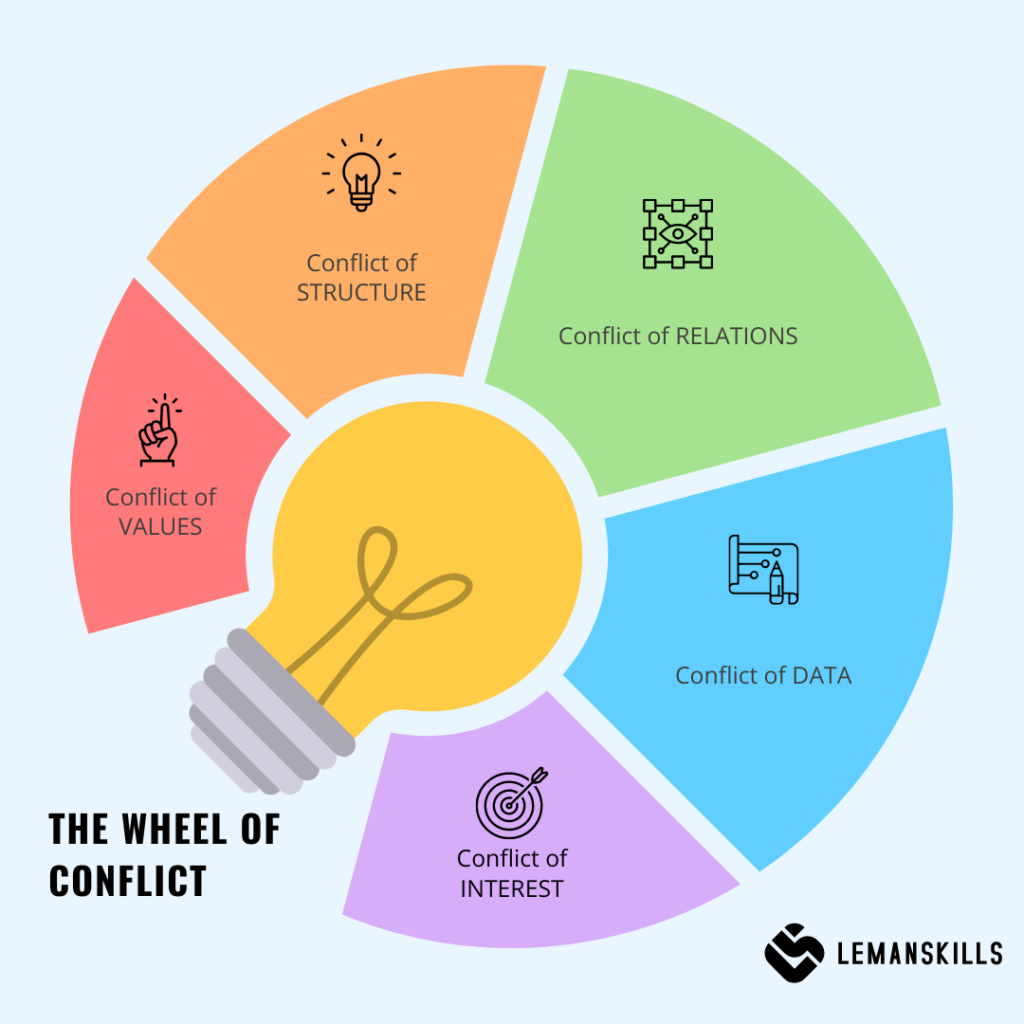
- Conflict of data is when we miss some pieces of information. It’s like having an Excel spreadsheet where there are blanks in some cells and in consequence formulas don’t work. It can also happen when two people understand one thing in a different way (have different frame of reference).
- Conflict of structure is when there is a lack of clear scope of responsibilities between people/teams, the processes or policies are not working (or they don’t exist at all). It can also happen when there is a lack of contract (we don’t know who is responsible for what, when and why).
- Conflict of interest is when one side has their own goals that are contradictory to those that the other side has. A great example is a salesperson and a service person: the first one’s goal is to sale as much as possible, and the second person is responsible for the best quality of service, while taking care of the same customer. The first one has bonus from each customer, and the other has a bonus from not-returning-with-questions clients. Completely different focus.
- Conflict of values is when we have religious or political differences, that are influencing our ways of living or are a base of what is important and not-negotiable for us. This type of conflict is not solvable, we can only agree to not bring those subjects to the conversation or mediate when it influences our workspace somehow.
- Conflict of relations is at the end of the cycle. The interesting thing is when we think about conflicts, the first thing that comes to our mind is “people are not communicating well” or “they don’t like each other” – we don’t dig deeper into first four types of conflict. The truth is that conflict of relations is at the very end, mostly as consequence of one (or more) of the previous ones. It’s happening when we communicate badly, we use stereotypes in our way of thinking, can’t deal with strong emotions that we experience, or we repeat other negative behaviors.
What can we do with the dysfunctional conflicts? First and foremost: we need to map and name correctly which conflict is the real one in the situation we are dealing with. Without that, even the most beautiful strategy is not going to work, because we are going to answer to the wrong need. We’ll get frustrated and use all our energy badly. Focus on investigating will bring the best results, since then the solutions will be to the point: it’s more than certain that it’s worth investing time in this process.
The bottom line
The conflict is a huge, hairy, and scary thing that we often have very strong convictions about. We avoid it, by staying low, don’t speak up to not get into any confrontation. We do it because we don’t want to get hurt, expose ourselves to bad emotions, stress or feeling that we do not belong. Perfectly natural, there is nothing to be ashamed of.
When we make a mindset shift: from fixed (focused on avoiding conflict) to a growth one, where we take into consideration that the conflict can be good for us, nourishing and interesting, we can gain more than we think. With remembering about having a good intention, being in OK-OK zone and with a goal of creating something extraordinary as a consequence of a passionate discussion, we can achieve the outcome that won’t be possible to achieve on our own.
It puts old, good conflict in a completely new light. I believe it’s worth trying if it fits.

